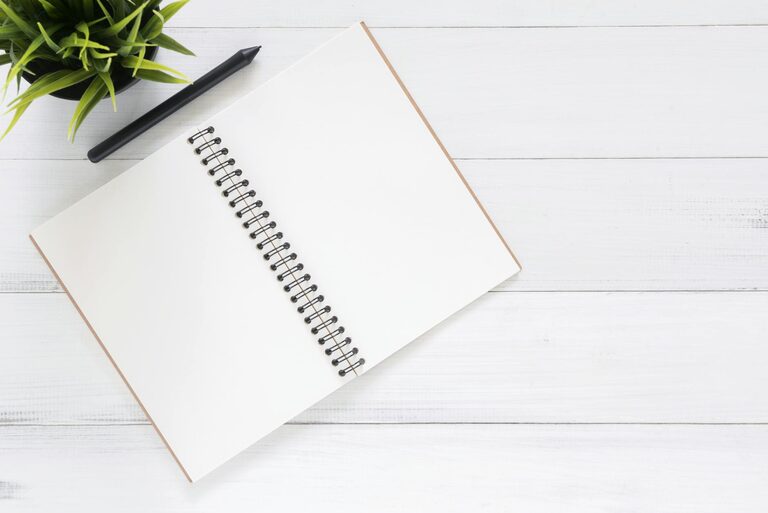Choosing the right notebook might seem like a simple task, but with countless options available, it can quickly become overwhelming. Whether you want a notebook for work, school, journaling, or creative projects, selecting one that suits your needs will help ensure you actually use it. This guide will walk you through key considerations to help you find a notebook that fits your lifestyle and keeps you inspired to write.
Why Choosing the Right Notebook Matters
A notebook is more than just a bundle of paper; it’s a tool for capturing ideas, organizing tasks, and reflecting on your thoughts. Using a notebook that feels comfortable and appealing will encourage you to write regularly and stay organized. On the other hand, a notebook that doesn’t fit your style or needs might end up unnoticed on a shelf.
Step 1: Identify Your Purpose
Before you purchase a notebook, think about what you want to use it for. This will guide your decision on size, format, and features.
– Note-taking: For school or meetings, you might prefer a larger notebook with lined pages.
– Journaling: You might prioritize a notebook with thick, high-quality paper and a durable cover.
– Creative sketching: A notebook with blank or dotted pages might be more inspiring.
– Planning and organization: Consider a notebook with pre-printed calendars or bullet journal layouts.
Knowing your primary use helps narrow down options significantly.
Step 2: Choose the Right Size
Notebooks come in various sizes, and the best one depends on where and how you’ll use it.
– Pocket-size (A6 or smaller): Easy to carry everywhere, perfect for quick notes or ideas on the go.
– Mid-size (A5): Balances portability and writing space; suitable for most everyday uses.
– Large (A4 or larger): Great for detailed notes, sketches, or formal documentation but less portable.
Think about your daily routine. If you carry a bag, a mid-size notebook fits nicely without adding bulk. If you prefer to jot down thoughts anytime, a pocket notebook is handy.
Step 3: Decide on Paper Type and Quality
The feel of the paper affects your writing experience and the types of pens you can use.
– Paper weight: Measured in grams per square meter (gsm). Higher gsm (80-120) means thicker paper, which reduces ink bleed-through.
– Line style: Lined, grid, dotted, or blank pages – choose based on your writing or drawing preferences.
– Paper color: White, cream, or even pastel-colored pages can change the mood and readability.
If you like using markers or fountain pens, invest in notebooks with higher gsm paper to prevent ink bleed.
Step 4: Select Binding Style
Binding affects how your notebook opens and how durable it is.
– Spiral-bound: Opens flat and easy to fold back, perfect for note-taking but can wear out over time.
– Perfect-bound (glued spine): Looks like a paperback book, more formal but may not open completely flat.
– Thread-bound (sewn): Durable and often opens flat; preferred for journals and planners.
– Hardcover vs. Softcover: Hardcovers protect your notes better and provide a sturdy writing surface; softcovers are lighter and more flexible.
Consider where you plan to write and how much wear your notebook will endure.
Step 5: Consider Additional Features
Some notebooks offer extras that might enhance your experience.
– Page numbers and index: Useful for referencing notes later.
– Bookmarks or elastic bands: Help keep your place or keep the notebook closed.
– Pocket folders: For storing loose papers, receipts, or stickers.
– Perforated pages: Allow easy removal.
– Grid or dot layouts: Great for bullet journaling or technical sketches.
Think about whether these extras suit how you like to organize.
Step 6: Reflect on Aesthetic and Personal Preference
A notebook that looks appealing increases your desire to use it.
– Choose colors, cover designs, and textures that make you happy.
– Some prefer minimalistic, plain covers; others enjoy artistic or motivational designs.
– Consider size and weight for daily convenience.
Remember, a notebook that looks inviting encourages regular use.
Step 7: Test Before You Commit
If possible, visit a stationery store before buying. Feel the paper, open the notebook, test your favorite pen or pencil to see how it writes on the pages. This hands-on experience can prevent disappointment.
If shopping online, read reviews and check return policies.
Tips for Getting the Most Out of Your Notebook
– Assign a clear purpose to your notebook to avoid mixed usage.
– Keep it accessible where you plan to use it.
– Use tabs, stickers, or color-coding to stay organized.
– Set aside time regularly to write or review your notes.
Final Thoughts
Choosing a notebook that you’ll actually use combines practical considerations with personal taste. By focusing on your intended use, preferred size, paper quality, binding, and aesthetics, you can find a notebook that inspires you every time you open it. With the right choice, your notebook will become a trusted companion in your daily life.
Happy writing!

